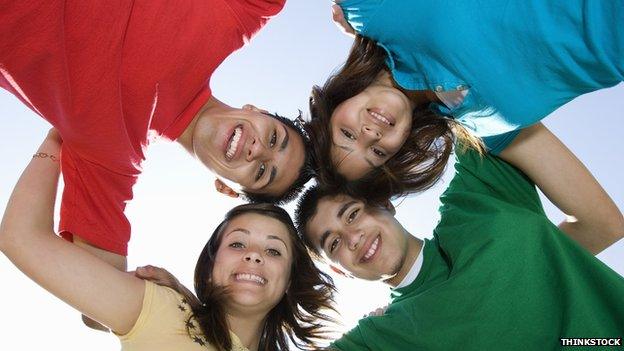Small Data: 1,574,728 - could young voters swing an election?
- Published

The Labour Party has promised to give 16 and 17-year-olds the right to vote. There were 1,574,728 people that age in the UK at the time of the last election - could they have swung the vote, asks Anthony Reuben.
It was a tight election in 2010, which led to the formation of a coalition government as the Conservative Party won 307 seats, 19 short of the 326 it would have needed to form a majority government alone.
The Conservatives won 49 more seats than Labour's 258 seats while the Liberal Democrats won 57 seats.
It's no good looking at whether the number of 16 and 17-year-olds would have swung the vote overall because the UK's political system works on a constituency by constituency basis (although for the record, the Conservatives won 2.1 million more votes than Labour).
But the Office for National Statistics, General Register Office for Scotland and the Northern Ireland Statistics and Research Agency report population figures broken down by constituency and by age group.
I have taken figures for mid-2010, which is a close enough approximation to election day in May. It turns out that in 95 of the 650 constituencies in the UK, the winning candidate had a majority smaller than the number of 16 and 17-year-olds living there.
For the biggest two parties, 43 of those seats were Conservatives and 33 were Labour. Now, clearly this assumes that all 16 and 17-year-olds are eligible to vote, that they choose to vote and indeed that they vote for the candidate in second place in the ballot.
But it demonstrates that the new teenage voters could swing a tight election and that politicians might have to start wooing a younger electorate if change does eventually come.
Subscribe to the BBC News Magazine's email newsletter to get articles sent to your inbox.